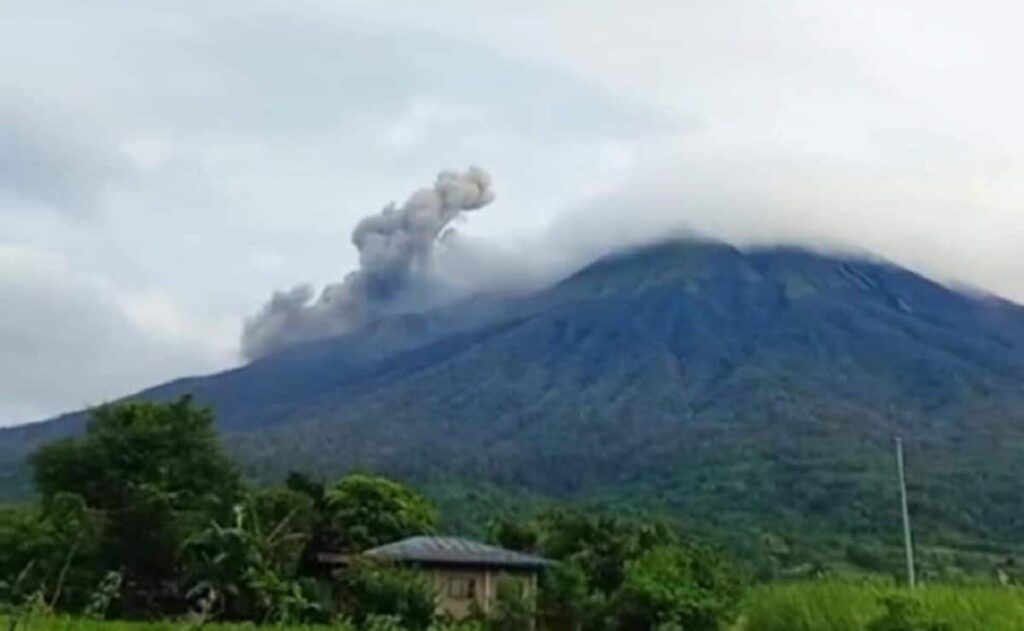
File photo of Mt. Kanlaon, which shows emitting ash as seen from La Castellana town, Negros Occidental, on Dec. 28, 2024. — PHOTO COURTESY OF JERICK RECAPLAZA
MANILA, Philippines — Ashfall and sulfuric smell were reported in nearby areas after an ash emission occurred from the crater of Kanlaon Volcano on Saturday afternoon, the Philippine Institute of Volcanology and Seismology (Phivolcs) reported.
In a Facebook post, Phivolcs said that the event happened at 2:32 p.m. and lasted for eight minutes. It also released a plume reaching 1,500 meters above the crater and drifted west-northwest.
READ: Bago City prefers ‘bahay kubo’ over tents for Kanlaon evacuees
The agency said that ashfall and sulfurous smells were reported in the following areas of Bago City in Negros Occidental:
- Brgy. Mailum (Purok Lunao, Kakapihan I and II, Kamotihan I and II, Kalubihan II, Kasagingan, Kapahuan, Katubuhan and Rakel, Pili, Durar-og, Abacca, Humayan, Esperanza, Kawayanan, Tabidiao I and II)
- Brgy. Maao (Proper, Pandan)
- Brgy. Binubuhan (Purok Waterlily)
- Brgy. Abuanan (Purok Rose)
- Brgy. Dulao (Purok Reola)
- Brgy. Atipuluan (Purok Paglaum, Pagsilak, Riverside, Masinadyahon, Mainuswagon)
- Brgy. Ilijan (Purok Malungay B)
Sulfurous smells were also observed in Brgy. Bacong, Bago City.
READ: After Mt. Kanlaon eruption, residents suffer skin irritation
Kanlaon Volcano
Phivolcs also noted that “SO2 [sulfur dioxide] flux was measured today at an average of 2,625 tonnes/day, less than the medium term average since 03 June 2024 of 4,440 tonnes/day, while degassing from the summit crater has been weak since 6 February 2025.”
The volcano registered a minor explosion last February 6, producing sulfurous flumes that were reported in several barangays in La Castallena, Negros Occidental.
READ: Kanlaon: LGUs told letting evacuees return home a risky decision
Kanlaon Volcano, located between Negros Oriental and Negros Occidental, remains under Alert Level 3, indicating a magmatic unrest.
Phivolcs still prohibits flights within the vicinity of the volcano and warns of possible hazards such as sudden explosive eruption, lava flow, ash fall, rockfall, lahar during heavy rains, and pyroclastic flow.


